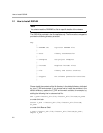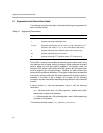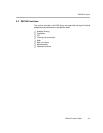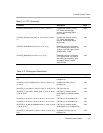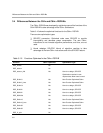
Arguments and Conventions Used
3-2
3.1 Arguments and Conventions Used
The following convention has been used when describing the arguments for
each individual function:
Table 3−1. Argument Conventions
Argument Description
x,y Argument reflecting input data vector
r Argument reflecting output data vector
nx,ny,nr Arguments reflecting the size of vectors x,y, and r, respectively. For
functions in the case nx = ny = nr, only nx has been used across.
h Argument reflecting filter coefficient vector (filter routines only)
nh Argument reflecting the size of vector h
w
Argument reflecting FFT coefficient vector (FFT routines only)
Some C64x+ functions have additional restrictions due to optimization using
new features such as higher multiply throughput. While these new functions
perform better, they can also lead to problems if not carefully used. For
example, DSP_autocor_rA8 is faster than DSP_autocor, but the output buffer
must be aligned to an 8−byte boundary. Therefore, the new functions are
named with any additional restrictions. Three types of restrictions are specified
to a pointer: minimum buffer size (M), buffer alignment (A), and the number of
elements in the buffer to be a multiple of an integer (X).The following
convention has been used when describing the arguments for each individual
function:
A kernel function foo with two parameters, m and n, with the following
restrictions:
m −> Minimum buffer size = 8, buffer alignment = double word, buffer
needs to be a multiple of 8 elements
n −> Minimum buffer size = 32, buffer alignment = word , buffer needs to be
a multiple of 16 elements
This function would be named: foo_mM8A8X8_nM32A4X16.





